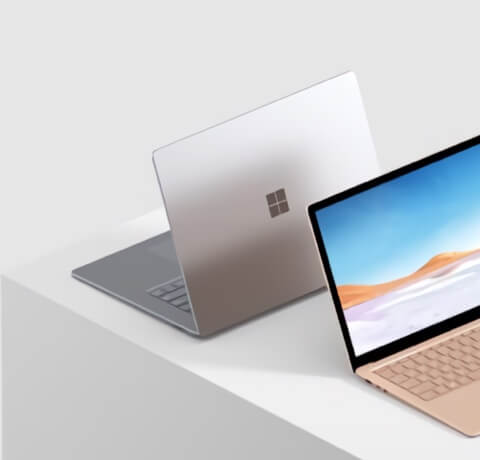0-9
Cisco Support Category page for Switches - My Devices, Support Documentation, Downloads, and End-of-Life Notifications. We have of the time typing this around 100 switches. Alot of the switches has just been left uttouched for to long (regarding firmware, VLANs, RADIUS, 802.1X etc, change passwords etc). So I'm currently tasked with finding a software that can take all models we have, we have: HP ProCurve 2530 a.

- 2
ESW2 Series Advanced Switches
- 90
Small Business 90 Series Unmanaged Switches
- 95
Small Business 95 Series Unmanaged Switches
- 100
Small Business 100 Series Unmanaged Switches
- 110
Business 110 Series Unmanaged SwitchesSmall Business 110 Series Unmanaged Switches
- 200
MS200X Series Ethernet Access SwitchSmall Business 200 Series Smart Switches
- 220
220 Series Smart Switches
- 250
250 Series Smart SwitchesBusiness 250 Series Smart Switches
- 300
Small Business 300 Series Managed Switches
- 350
350 Series Managed Switches350X Series Stackable Managed SwitchesBusiness 350 Series Managed Switches
- 500
Small Business 500 Series Stackable Managed Switches
- 550
550X Series Stackable Managed Switches
- 1000
Catalyst 1000 Series SwitchesCitrix NetScaler 1000VIndustrial Ethernet 1000 Series SwitchesNexus 1000V InterCloudNexus 1000V Switch for KVMNexus 1000V Switch for Microsoft Hyper-VNexus 1000V Switch for VMware vSphereNexus 1000VE
- 1100
Nexus 1100 Series Cloud Services Platforms
- 1200
ME 1200 Series Carrier Ethernet Access Devices
- 2000
Industrial Ethernet 2000 Series SwitchesIndustrial Ethernet 2000U Series SwitchesNexus 2000 Series Fabric Extenders
- 2100
Cloud Services Platform 2100
- 2500
2500 Series Connected Grid Switches
- 2600
ME 2600X Series Ethernet Access Switches
- 2918
Catalyst 2918 Series Switches
- 2960
Catalyst 2960 Series SwitchesCatalyst 2960-C Series SwitchesCatalyst 2960-CX Series SwitchesCatalyst 2960-L Series SwitchesCatalyst 2960-Plus Series SwitchesCatalyst 2960-S Series SwitchesCatalyst 2960-SF Series SwitchesCatalyst 2960-X Series SwitchesCatalyst 2960-XR Series Switches
- 3000
Industrial Ethernet 3000 Series SwitchesNexus 3000 Series Switches
- 3010
Industrial Ethernet 3010 Series Switches
- 3200
Catalyst IE3200 Rugged Series
- 3300
Catalyst IE3300 Rugged SeriesEmbedded Services 3300 Series Switches
- 3400
Catalyst IE3400 Heavy Duty SeriesCatalyst IE3400 Rugged SeriesME 3400E Series Ethernet Access Switches
- 3550
Nexus 3550 Series
- 3560
Catalyst 3560 Series SwitchesCatalyst 3560-C Series SwitchesCatalyst 3560-CX Series SwitchesCatalyst 3560-X Series Switches
- 3600
ME 3600X Series Ethernet Access Switches
- 3650
Catalyst 3650 Series Switches
- 3750
Catalyst 3750 Series SwitchesCatalyst 3750-X Series Switches
- 3800
ME 3800X Series Carrier Ethernet Switch Routers
- 3850
Catalyst 3850 Series Switches
- 4000
Industrial Ethernet 4000 Series SwitchesNexus 4000 Series Switches
- 4010
Industrial Ethernet 4010 Series Switches
- 4500
Catalyst 4500 Series SwitchesCatalyst 4500-X Series Switches
- 4600
ME 4600 Series Multiservice Optical Access Platform
- 4900
Catalyst 4900 Series SwitchesME 4900 Series Ethernet Switches
- 5000
Industrial Ethernet 5000 Series SwitchesNexus 5000 Series Switches
- 6000
Nexus 6000 Series Switches
- 6500
Catalyst 6500 Series SwitchesCatalyst 6500 Virtual Switching System 1440
- 6800
Catalyst 6800 Series Switches
- 7000
Nexus 7000 Series Switches
- 8800
MGX 8800 Series Switches
- 8900
MGX 8900 Series Switches
- 9000
Nexus 9000 Series Switches
- 9200
Catalyst 9200 Series Switches
- 9300
Catalyst 9300 Series SwitchesCatalyst ESS9300 Embedded Series Switch
- 9400
Catalyst 9400 Series Switches
- 9500
Catalyst 9500 Series Switches
- 9600
Catalyst 9600 Series Switches
A-Z
| End-of-Support Date | Cisco Product |
|---|---|
| 31 Oct 2019 | |
| 30 Apr 2020 | |
| 30 Jun 2020 | |
| 31 Jul 2020 | |
| 31 Jul 2020 | |
| 31 Jul 2020 | |
| 31 Oct 2020 | Cisco Catalyst 2918 Series Switches |
| 30 Nov 2020 | |
| 31 Dec 2020 | Cisco Small Business 90 Series Unmanaged Switches |
| 31 Dec 2020 | |
| 31 Jan 2021 | |
| 26 Feb 2021 | |
| 28 Feb 2021 | |
| 30 May 2021 | |
| 31 May 2021 | |
| 31 May 2021 | |
| 21 Oct 2021 | |
| 31 Oct 2021 | |
| 31 Oct 2021 | |
| 06 Nov 2021 | |
| 30 Nov 2021 | |
| 30 Apr 2022 | |
| 31 Oct 2022 | |
| 31 Oct 2022 | |
| 28 Feb 2023 | |
| 30 Apr 2023 | |
| 31 Oct 2023 | |
| 31 Jan 2024 | |
| 30 Jun 2025 | |
| 30 Sep 2025 | |
| 31 Oct 2025 | |
| 31 Mar 2026 |
The above products will no longer be supported by Cisco upon reaching the end-of-support date. They will be removed from the Cisco Support site two years after the end-of-support date.
-->Applies To: Windows 10, Windows Server 2016, Microsoft Hyper-V Server 2016, Windows Server 2019, Microsoft Hyper-V Server 2019


A virtual switch allows virtual machines created on Hyper-V hosts to communicate with other computers. You can create a virtual switch when you first install the Hyper-V role on Windows Server. To create additional virtual switches, use Hyper-V Manager or Windows PowerShell. To learn more about virtual switches, see Hyper-V Virtual Switch.
Virtual machine networking can be a complex subject. And there are several new virtual switch features that you may want to use like Switch Embedded Teaming (SET). But basic networking is fairly easy to do. This topic covers just enough so that you can create networked virtual machines in Hyper-V. To learn more about how you can set up your networking infrastructure, review the Networking documentation.
Create a virtual switch by using Hyper-V Manager

T-mobile Switch Manager Salary
Open Hyper-V Manager, select the Hyper-V host computer name.
Select Action > Virtual Switch Manager.
Choose the type of virtual switch you want.
Connection type Description External Gives virtual machines access to a physical network to communicate with servers and clients on an external network. Allows virtual machines on the same Hyper-V server to communicate with each other. Internal Allows communication between virtual machines on the same Hyper-V server, and between the virtual machines and the management host operating system. Private Only allows communication between virtual machines on the same Hyper-V server. A private network is isolated from all external network traffic on the Hyper-V server. This type of network is useful when you must create an isolated networking environment, like an isolated test domain. Select Create Virtual Switch.
Add a name for the virtual switch.
If you select External, choose the network adapter (NIC) that you want to use and any other options described in the following table.
Setting name Description Allow management operating system to share this network adapter Select this option if you want to allow the Hyper-V host to share the use of the virtual switch and NIC or NIC team with the virtual machine. With this enabled, the host can use any of the settings that you configure for the virtual switch like Quality of Service (QoS) settings, security settings, or other features of the Hyper-V virtual switch. Enable single-root I/O virtualization (SR-IOV) Select this option only if you want to allow virtual machine traffic to bypass the virtual machine switch and go directly to the physical NIC. For more information, see Single-Root I/O Virtualization in the Poster Companion Reference: Hyper-V Networking. If you want to isolate network traffic from the management Hyper-V host operating system or other virtual machines that share the same virtual switch, select Enable virtual LAN identification for management operating system. You can change the VLAN ID to any number or leave the default. This is the virtual LAN identification number that the management operating system will use for all network communication through this virtual switch.
Click OK.
Click Yes.
Create a virtual switch by using Windows PowerShell
On the Windows desktop, click the Start button and type any part of the name Windows PowerShell.
Right-click Windows PowerShell and select Run as Administrator.
Find existing network adapters by running the Get-NetAdapter cmdlet. Make a note of the network adapter name that you want to use for the virtual switch.
Create a virtual switch by using the New-VMSwitch cmdlet. For example, to create an external virtual switch named ExternalSwitch, using the ethernet network adapter, and with Allow management operating system to share this network adapter turned on, run the following command.
To create an internal switch, run the following command.
To create an private switch, run the following command.
For more advanced Windows PowerShell scripts that cover improved or new virtual switch features in Windows Server 2016, see Remote Direct Memory Access and Switch Embedded Teaming.
Enterprise Switch Manager

Hyper-v Virtual Switch Manager
Next step
